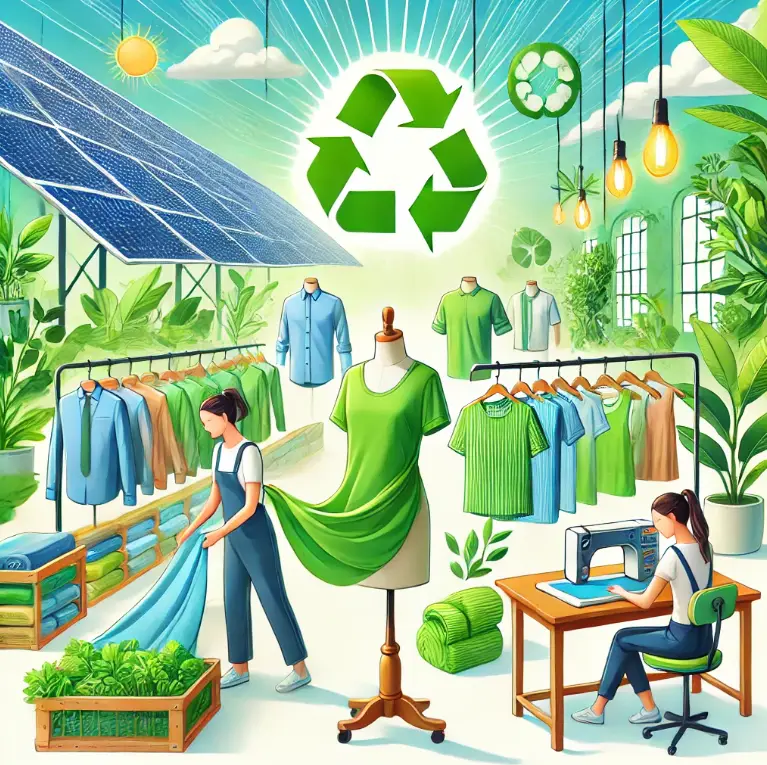
In 2024, sustainability has moved beyond a niche concern and has become a core strategy for brands across the apparel industry. As consumer preferences shift toward eco-friendly and ethically made products, brands must adapt to remain competitive. This transformation in fashion is not just a response to consumer demand but also an acknowledgment of the urgent environmental challenges posed by traditional manufacturing practices.
1. Eco-Friendly Materials and Ethical Production
One of the most visible trends is the adoption of sustainable materials. Brands are increasingly using recycled fibers, organic cotton, and biodegradable fabrics to reduce their environmental impact. Major players like Zara and H&M have rolled out collections made from sustainable fabrics, while niche brands are using innovations like bio-based leather alternatives and water-saving dyeing techniques【9†source】.
Ethical production is also at the forefront. More companies are investing in supply chain transparency, ensuring that workers are treated fairly and paid livable wages. This is crucial for maintaining trust with eco-conscious consumers who are more likely to support brands that align with their values.
2. The Rise of Circular Fashion
The concept of circular fashion—where garments are designed to be reused, recycled, or biodegraded—continues to gain traction. Circular fashion emphasizes extending the lifecycle of clothing, which directly counters the wasteful nature of fast fashion.
The resale market is thriving, with platforms like Vinted and thredUP leading the charge. Additionally, fashion rental services are becoming more mainstream, offering consumers the ability to wear high-end pieces without the long-term commitment of purchase. This shift is particularly appealing to Gen Z and Millennials, who prioritize sustainability but still enjoy variety in their wardrobes【10†source】.
3. Challenges in Achieving Sustainability
While the push for sustainability is strong, challenges remain. Implementing eco-friendly practices can be costly, and not all consumers are willing to pay a premium for sustainable fashion. Additionally, brands must balance these efforts with the need for profitability, especially in a time of economic uncertainty【10†source】.
Despite these challenges, governments and consumers are pressuring companies to reduce waste and carbon emissions. Many fashion houses are experimenting with reducing water usage, eliminating toxic chemicals from production, and investing in renewable energy to power their factories【9†source】.
4. Sustainability and the Future of Fashion
Looking ahead, brands that prioritize sustainability will likely see long-term benefits, both in terms of customer loyalty and operational efficiency. By reducing waste and adopting eco-friendly practices, companies can cut costs in the long run and minimize their environmental footprint. As technology evolves, we can expect even more innovations in sustainable fabrics, production methods, and recycling systems that make fashion greener than ever.
In conclusion, sustainability is no longer optional in the apparel industry—it’s essential for any brand that wants to stay relevant in the years to come. The future of fashion lies in eco-conscious production, circular models, and a genuine commitment to protecting our planet.
Social Share